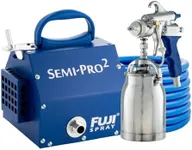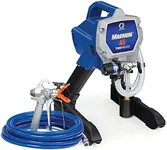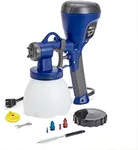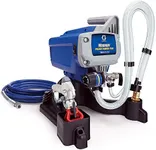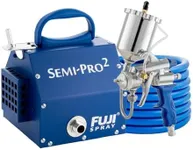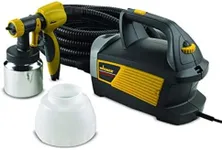Buying Guide for the Best Paint Gun Sprayer
Choosing the right paint gun sprayer can make your painting projects faster, easier, and give you a more professional finish. The best sprayer for you depends on what you plan to paint, how often you’ll use it, and your comfort with handling different types of equipment. Understanding the main features and specifications will help you pick a sprayer that matches your needs and gives you the best results.Type of SprayerPaint sprayers come in several types, mainly airless, HVLP (High Volume Low Pressure), and compressed air sprayers. Airless sprayers are powerful and good for large surfaces like walls and fences, delivering paint quickly and evenly. HVLP sprayers are better for detail work and smaller projects, as they offer more control and less overspray. Compressed air sprayers are traditional and versatile but require an air compressor. To choose the right type, think about the size and detail of your projects—large, flat areas benefit from airless, while furniture or cabinets are often best with HVLP.
Flow Rate (Gallons per Minute or Liters per Minute)Flow rate tells you how much paint the sprayer can push out in a given time. A higher flow rate means you can cover large areas faster, but it can also mean more overspray and less control. Lower flow rates are better for detailed work and smaller projects. If you plan to paint big surfaces like walls or fences, a higher flow rate is helpful. For furniture, crafts, or touch-ups, a lower flow rate gives you more precision.
Nozzle/Tip SizeThe nozzle or tip size controls how much paint comes out and how wide the spray pattern is. Larger tips are used for thicker paints and bigger surfaces, while smaller tips are for thinner paints and detailed work. If you plan to use thicker materials like latex paint, look for a sprayer that supports larger tips. For stains or finishes on furniture, smaller tips are better. Always match the tip size to the type of paint and the project you’re working on.
Adjustable PressureAdjustable pressure lets you control how forcefully the paint is sprayed. Higher pressure is good for fast coverage on big areas, while lower pressure helps with detail and reduces overspray. If you want flexibility to work on different types of projects, look for a sprayer with adjustable pressure. This way, you can switch between high and low settings depending on what you’re painting.
Ease of CleaningPaint sprayers need to be cleaned after each use to keep them working well. Some models are easier to clean than others, with features like detachable parts or quick-flush systems. If you want to save time and avoid frustration, look for a sprayer that’s designed for easy cleaning. This is especially important if you plan to use the sprayer often or switch between different types of paint.
Paint CompatibilityNot all sprayers work with every type of paint. Some are designed for thin materials like stains and lacquers, while others can handle thick paints like latex. Check what types of paint the sprayer can use, especially if you have a specific project in mind. If you want to use a variety of paints, choose a sprayer that’s compatible with multiple types.
Weight and ErgonomicsThe weight and design of the sprayer affect how comfortable it is to use, especially for long periods. Lighter, well-balanced sprayers are easier to handle and reduce fatigue. If you have a lot of painting to do or need to reach overhead or awkward spots, consider how the sprayer feels in your hand. Try to pick one that’s comfortable and easy to maneuver for your typical projects.

